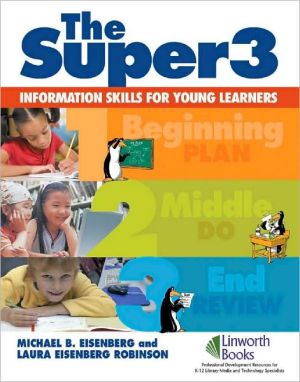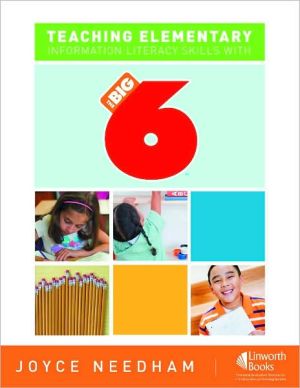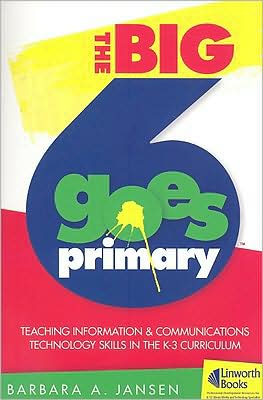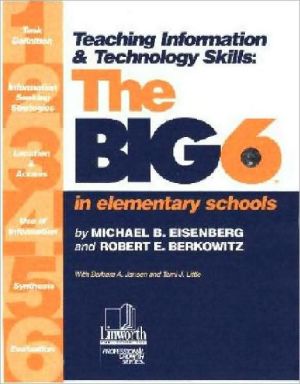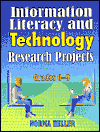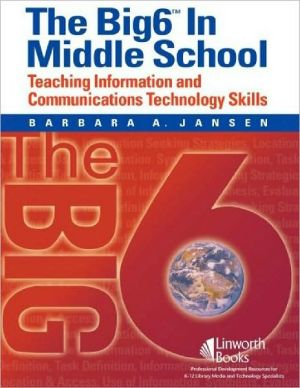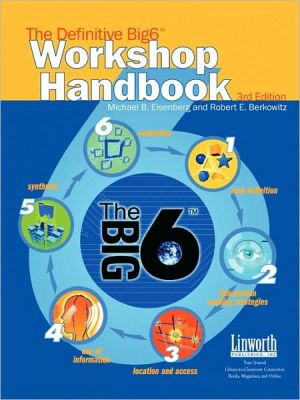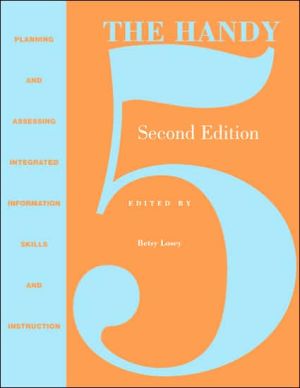The Super3: Information Skills for Young Learners
Use The Super3, a spin off from the widely used Big6, to help students in grades PreK-2 develop crucial problem-solving skills. Learn how to break down the problem-solving process so that younger students get it and remember it. Discover a process model for children to learn and use in order to be successful with the various tasks they undertake. The Super3 helps younger students recognize what they are doing so they can label and talk about their research. Provides an easy transition into...
Search in google:
Use The Super3, a spin off from the widely used Big6, to help students in grades PreK-2 develop crucial problem-solving skills. Learn how to break down the problem-solving process so that younger students get it and remember it. Discover a process model for children to learn and use in order to be successful with the various tasks they undertake. The Super3 helps younger students recognize what they are doing so they can label and talk about their research. Provides an easy transition into the Big6. Ready-to-use worksheets include explanations for daily implementation of the Super3 into the classroom. Mike Eisenberg and Laura Eisenberg Robinson have adapted the widely used Big6 research approach for students in grades PreK-2. The Super3 uses the three simple steps: Plan, Do, Review. School Library Journal The authors instruct readers on the implementation of the BIG6 ideas at the pre-K through second-grade levels. They hone the concepts down to three encompassing ones-"Plan, Do, and Review"-called the Super3. Essential questions this format works to answer are: "What do I need to get done, and how do I approach it?" Retaining the fundamental framework of good lesson design, the plan spans all curricular areas and includes use of diverse literacy skills. Most of the book supports a hands-on approach and provides users with a plethora of lessons and worksheets. While the text follows a traditional linear layout, readers can access any chapter and implement the lesson. Longtime educators will be familiar with many of the strategies; what the authors offer is the next step, i.e., to take these known strategies, for example, the Topic-Restriction-Illustration Frame (SQ3R), and build a whole curricular lesson around them. Novice educators will appreciate seeing education theory as a concrete and tangible form. While geared toward younger students, ESL and struggling middle school students will benefit from many of the study-skills worksheets that use pictographs and graphic organizers. -Tina Hudak, St. Albans School for Boys, Washington, DC
\ School Library JournalThe authors instruct readers on the implementation of the BIG6 ideas at the pre-K through second-grade levels. They hone the concepts down to three encompassing ones-"Plan, Do, and Review"-called the Super3. Essential questions this format works to answer are: "What do I need to get done, and how do I approach it?" Retaining the fundamental framework of good lesson design, the plan spans all curricular areas and includes use of diverse literacy skills. Most of the book supports a hands-on approach and provides users with a plethora of lessons and worksheets. While the text follows a traditional linear layout, readers can access any chapter and implement the lesson. Longtime educators will be familiar with many of the strategies; what the authors offer is the next step, i.e., to take these known strategies, for example, the Topic-Restriction-Illustration Frame (SQ3R), and build a whole curricular lesson around them. Novice educators will appreciate seeing education theory as a concrete and tangible form. While geared toward younger students, ESL and struggling middle school students will benefit from many of the study-skills worksheets that use pictographs and graphic organizers. -Tina Hudak, St. Albans School for Boys, Washington, DC\ \ \
